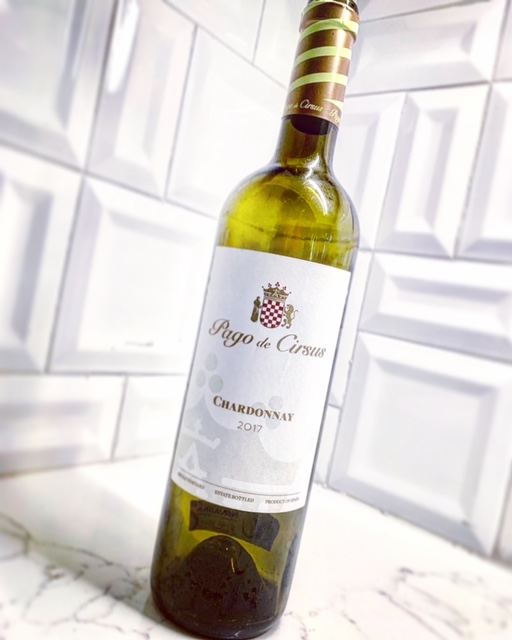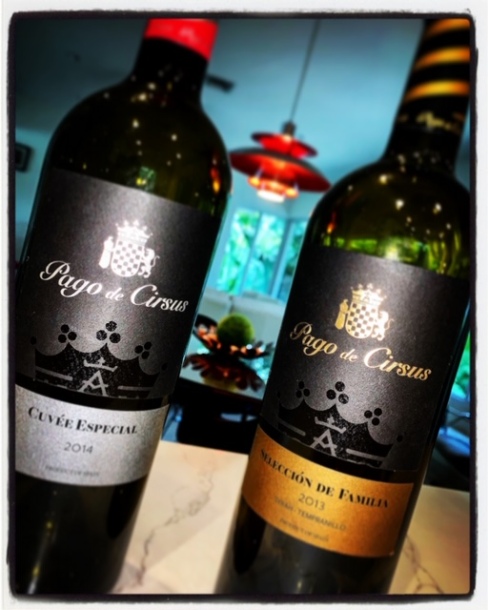 In preparation for a vacation throughout central and northern Spain my vino-loving friends decided to introduce me to the wines of Pago de Cirsus from the region of Navarra. As luck would have it they had me at Navarra, a denomination of origin or region in central-northern Spain that I favor and neighbors the better-known Rioja. I hate to generalize, but I can honestly say that I have never had a bad wine from the Navarra area.
In preparation for a vacation throughout central and northern Spain my vino-loving friends decided to introduce me to the wines of Pago de Cirsus from the region of Navarra. As luck would have it they had me at Navarra, a denomination of origin or region in central-northern Spain that I favor and neighbors the better-known Rioja. I hate to generalize, but I can honestly say that I have never had a bad wine from the Navarra area.
Thanks to the wines of Pago de Cirsus I am happy to report that my favorable opinion of wines from Navarra continues to grow. We didn’t drink them all on the same night, not that there is anything wrong with that, but we had the pleasure of discovering three of their different releases over a couple of different stay at home dinners. It pays to have wine-loving friends and neighbors.
Pago de Cirsus 2017 Chardonnay; hand harvested, 100% Chardonnay
This wine was an immediate hit and surprisingly my first true Chardonnay from Spain. Served with vegetarian / vegan hors d’oeuvres it disappeared quickly and left guests asking for more. This from non Chardonnay drinkers! Beautiful notes of rich tropical fruits; peach, pineapple with no oak detected.
The Chardonnay was actually the last of the three wines sampled and it was sampled on a different night altogether. For the reds, the evening was planned and a bit more organized. As soon as the guests arrived and settled [party of six] the notepads and writing utensils came out. I quickly realized that six different people taking notes in a very social setting was not going to work. Fate intervened and a volunteer note-taker for the group appeared. I will forever be grateful because thanks to this giving soul we have wine notes to review!
Pago de Cirsus 2014 Cuvee Especial; 45% Syrah, 40% Merlot, 17% Tempranillo. Fermented in French oak vats, and then 14 months in new French oak barrels,
With a great pedigree to start, unbeknownst to us, this hand harvested red-blend was selected as the best Spanish red wine, at the 2014 Brussels World Competition, it did not disappoint. Five out of the 6 tasters gave this wine high marks and thought it was representative of a more expensive bottle. Group notes: black pepper, mocha/chocolate, baking spices including clove, blackberry, fig, violet, leather, woodsy [cedar/oak]. Medium bodied.
 Pago de Cirsus 2013 Seleccion de Familia; 85% Syrah, 15% Tempranillo. Fermented in French oak vats, then 14 months in new French oak barrels. Aged three years.
Pago de Cirsus 2013 Seleccion de Familia; 85% Syrah, 15% Tempranillo. Fermented in French oak vats, then 14 months in new French oak barrels. Aged three years.
This without a doubt was the favorite of the night with six of the six guests agreeing on its excellent quality. A wine to savor with time on your side. The additional aging of this higher end of our three samples truly came through by adding character and richness. A great way to end our wine-tasting event. Group notes: tobacco, leather, black pepper, paprika, red fruits, smooth tannins, long finish.
Although my recent trip to northern Spain and Portugal did not include the Navarra wine-region, I am happy to report that this not known by most area is still tops on my list. As are the wines of Pago de Cirsus which have across the board truly impressed.
So, as I fantasize about another trip to Spain, you better believe I will continue to search out wines by Bodegas Pago de Cirsus, vino from Navarra, and reasons to share with wine-loving friends. ¡SALUD!
 As a wine student, educator, buyer and lover I truly enjoy discovering new varietals and regions. Sometimes I come across them myself or am guided to them by vendors, distributors, customers or friends. Petit Chablis falls into mostly the customer category. I’ve had many a customer refer to Petit Chablis as a varietal when in fact it is a region or better yet an appellation of the area known as Chablis, in Burgundy France.
As a wine student, educator, buyer and lover I truly enjoy discovering new varietals and regions. Sometimes I come across them myself or am guided to them by vendors, distributors, customers or friends. Petit Chablis falls into mostly the customer category. I’ve had many a customer refer to Petit Chablis as a varietal when in fact it is a region or better yet an appellation of the area known as Chablis, in Burgundy France. Crazy talk: Caymus Malbec? Napa? Argentina? Wagner Family? Followed by, how could they use the Caymus name? Trademark fraud! All these confused thoughts popped into my head simultaneously as I reviewed a restaurant’s wine list over lunch with the parental units to celebrate a birthday. There it was, Caymus Malbec. I didn’t order the wine that day, and very soon regretted it.
Crazy talk: Caymus Malbec? Napa? Argentina? Wagner Family? Followed by, how could they use the Caymus name? Trademark fraud! All these confused thoughts popped into my head simultaneously as I reviewed a restaurant’s wine list over lunch with the parental units to celebrate a birthday. There it was, Caymus Malbec. I didn’t order the wine that day, and very soon regretted it. Having connected all the Caymus dots, I looked for the opportunity to return to the same restaurant. Before me appeared the opportunity: out-of-town visiting relatives with a request for restaurant eating. Having recently had such a good experience my better-half unbeknownst suggested the same! restaurant. Now you know why they’re referred to as my better-half. Dinner night arrives, menu’s are scanned, and I suggest a bottle of red wine for the table. Instead of the expected “sure why not” I hear “NO!!!! we want cocktails instead”. I scan the table to no avail for any possible takers that would share this possibly magical event with me and then I order Bourbon instead…..
Having connected all the Caymus dots, I looked for the opportunity to return to the same restaurant. Before me appeared the opportunity: out-of-town visiting relatives with a request for restaurant eating. Having recently had such a good experience my better-half unbeknownst suggested the same! restaurant. Now you know why they’re referred to as my better-half. Dinner night arrives, menu’s are scanned, and I suggest a bottle of red wine for the table. Instead of the expected “sure why not” I hear “NO!!!! we want cocktails instead”. I scan the table to no avail for any possible takers that would share this possibly magical event with me and then I order Bourbon instead….. Closing in on 4 years later I finally took Michael Martini’s whispered advice and sampled “the Alexander Valley”. Yes, albeit a different vintage, but yet once again a wine renowned for its quality. With many recent 90pt plus ratings,
Closing in on 4 years later I finally took Michael Martini’s whispered advice and sampled “the Alexander Valley”. Yes, albeit a different vintage, but yet once again a wine renowned for its quality. With many recent 90pt plus ratings,